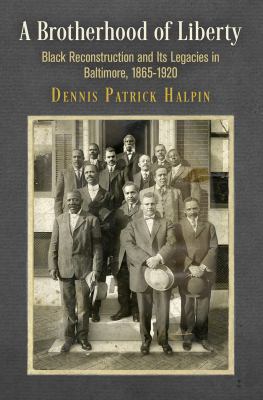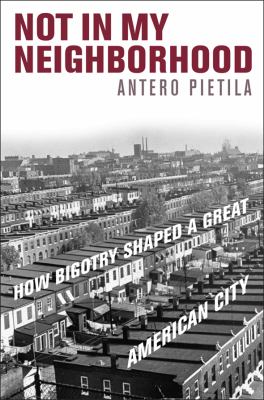A Review by Lisa Greenhouse Librarian II

by Dennis Patrick Halpin
Book
Assistant Professor of History at Virginia Tech, Dennis Patrick Halpin, has authored a fascinating addition to the Maryland Department’s collection: A Brotherhood of Liberty: Black Reconstruction and its Legacies in Baltimore, 1865-1920 (UPenn Press, 2019). Halpin’s look at African-American civil rights activism in Baltimore runs from the Reconstruction Era into the Progressive Period, spelling out continuities and highlighting a mostly forgotten cast of characters, whose collective achievements placed Baltimore at the center of those periods’ struggles.
Baltimore, unlike Southern locales in the formerly rebellious states, was not occupied by Federal troops to enforce the mandates of Reconstruction. The need to “self-reconstruct“ spurred activism in Baltimore and forced it along certain paths that later influenced the tactics of civil rights organizations with national scope.
Unlike Black men under Reconstruction, Black men in Maryland did not enjoy suffrage until the passage of the Fifteenth Amendment to the United States Constitution in 1870. The Republican Party in Maryland was happy to receive the votes of newly enfranchised Blacks but did little to advocate for their civil rights or elevate them to important positions within the party. Frustration and disillusionment with the Republicans turned activists away from politics as a viable path forward.
Self-Reconstruction in Baltimore came to embrace legal challenges and peaceful protest as the tools which activists used to carve out civil rights victories. While Reconstruction ended in the South in 1877, Baltimore’s self-reconstruction really got started in the 1880s, a period that historians have usually discounted as regressive.
Before the courts could be used effectively, the Maryland Bar, which in 1872 limited itself to accepting whites only, had to open to African-American attorneys. Halpin details the struggle toward this goal, which once achieved in 1885 for Baltimore, paved the way for further progress.
Harvey Johnson, the pastor of Baltimore’s Union Baptist Church, together with other African-American clergy and attorneys, were the forces behind the activism of the 1880s. Their Mutual United Brotherhood of Liberty, Baltimore’s first and one of the Nation’s first civil rights organizations, advocated for increased educational opportunities for black children, supported black labor, and pioneered the use of test cases to integrate public accommodations.
William M. Alexander, pastor at Sharon Baptist, and the attorney, Ashbie W. Hawkins, were important figures in the Brotherhood who carried the struggle forward into the Progressive Period. While this period saw increased democratization in some respects, for example, the direct election of senators and the granting of women’s suffrage, the flip side of the period for African-Americans was the Jim Crow regime. However, black activists in Baltimore successfully contested Jim Crow legislation and by taking important roles in national organizations such as the Saratoga Movement and the nascent NAACP, influenced national activists to adopt their techniques.
In the book’s final chapters, Halpin explores the response of Baltimore’s white community to African-American civil rights victories. Politicians, judges, police, and the popular press reacted to increased black power and pride by launching efforts to control black power and movement based on spurious claims of heightened black criminal activity.
Three times during the first decade of the twentieth century, Maryland attempted to legislate the disenfranchisement of blacks. And three times under Rev. William Alexander’s leadership, using boycotts, protests, and work stoppages, Black Baltimoreans repelled these efforts.
In 1910, Baltimore passed the nation’s first city ordinance mandating residential segregation. Civil Rights Attorney, Ashbie Hawkins, fought the ordinance in Maryland courts but his efforts were rendered mute when the US Supreme Court ruled in Buchanan v. Warley against a Louisville, KY, residential segregation ordinance modeled after the one in Baltimore. Nevertheless, the NAACP’s house organ, The Crisis, credited Hawkins, who had submitted a brief in Buchanan, as instrumental through his activism in bringing about the ultimate court victory.

by Antero Pietila
Book
If A Brotherhood of Liberty is of interest to you, keep in mind that the Maryland Department holds many books on local African-American history. For example, Not In My Neighborhood: How Bigotry Shaped a Great American City (Ivan R. Dee, 2010) by Antero Pietila is an illuminating exploration of residential segregation in Baltimore and nicely compliments Halpin’s later chapters.